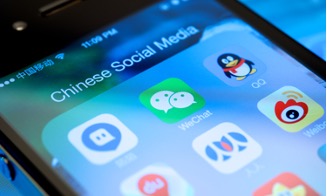If you haven’t already heard and done so, Chinese social media platforms are the space to explore for business expansion. With 1.4 billion people and a growing middle class, China’s consumer market is attractive to businesses globally, Singaporean brands included. Chinese social media has emerged as a formidable force in the realm of digital marketing. With a large user base and unique platforms designed for Chinese consumers, it’s essential for businesses to tap into China’s potential. As China continues to rise globally, brands must seize this opportunity to connect with their Chinese counterparts.
Trends in Chinese preferences
Up-and-coming industries

The Chinese consumer market is a rapidly changing landscape. Specifically, there has been an increased demand for organic and natural products as well as fitness equipment & wellness services in China’s health-conscious society. Singapore companies like OSIM or Eu Yan Sang have taken advantage of this trend by promoting their health-oriented products on various Chinese social media platforms with remarkable success.
There are also efforts towards sustainability as China embarks on their goal of carbon neutrality by 2060. With the 20th National Congress’ recommendation to advance green consumption and create a sustainable, low-carbon lifestyle, there has been a rise in consumers embracing eco-friendly practices. Many even demonstrate their willingness to pay extra for environmentally conscious products. This momentum is predicted to persist as more people become aware of the significance of incorporating sustainability into their daily lives.
What makes the Chinese market so special?
Chinese social media especially is a good place to start making a mark for yourself. The Chinese market is unique. Amid mass censorship, Chinese consumers turn to recommendations from friends and family. An independent survey of moisturiser purchasers observed that 66% of Chinese consumers relied on recommendations from friends and family, compared to 38% of their US counterparts. Therefore, Chinese netizens place a higher value on the recommendations of social media influencers compared to formal institutions and authorities. Additionally, they are also much more of a researcher than other countries.
Most notable, however, is the preference for local products. This is a trend that has only recently appeared. Back in 2011, foreign goods held Chinese consumers’ favour, but in recent times, more Chinese, especially those younger ones, are turning to domestic products. A common assumption would be to quote “national pride” as a factor. True – but there’s more to this story. Consumers now have greater confidence in the quality of local goods. With domestic producers offering cost-saving benefits and reasonable quality, this is a winning formula that trumps global brands.
This all sounds like a lost cause, but with an in-depth understanding of how Chinese preferences are shaped by their social media channels, you can leverage these seemingly negative points to imprint your brand in their hearts.
Chinese social media platforms
It’s worth noting that social media giants from the West, like Facebook, Twitter and YouTube are currently not accessible in China. This peculiar ban has made way for a distinctively separate Chinese social media landscape. By having mastery over these unique platforms, it conjures up a strategy to land your brand in the middle of the Chinese market.
WeChat stands as the unparalleled social media giant in China with a whopping 1 billion monthly active users. This all-in-one app is an exceptional tool that provides seamless chatting, bill payment, appointment booking and much more.
Its potential extends beyond personal use. Businesses can establish official WeChat accounts to extensively promote their products and services while relying on WeChat Pay to facilitate easy transactions. They also have the option to use mini-programs, which are small applications that can be integrated in WeChat. This allows them to provide their offerings directly to clients without requiring a seperate application or website.
Take a leaf out of Nike’s book. Nike introduced a WeChat mini–program that enabled users to create their customized sneakers and showcase the designs with their social circle. From this initiative, Nike garnered an overwhelming response of over 18 million design variations, helping Nike broaden its reach among Chinese consumers.
Instead of a mini-program, Huawei devised an effective strategy on WeChat by collaborating with KOLs and formulating a captivating game, enabling participants to obtain rewards. The campaign resulted in more than 1.3 million views and amplified Huawei’s brand recognition and involvement within the platform.
Weibo, a microblogging site comparable to Twitter, boasts of more than 550 million active users every month. It is the top choice for celebrities, influencers and businesses to express their opinions, and connect with fans and customers.
Weibo is a highly advantageous platform for marketing due to its vast reach. Its user base spans across diverse demographics and geographic locations in China. This makes it an ideal choice for businesses with broad target audiences. Furthermore, Weibo provides various features and tools that enable businesses to enhance their brand visibility and engage with followers effectively. Using sponsored posts on Weibo, businesses can directly promote their products or services to targeted audiences.
Tourism New Zealand executed an intelligent and compelling KOL approach to entice Chinese tourists. Designating renowned microblogger Yao Chen as their brand ambassador, Yao Chen avidly shared visually stunning images of her tour in New Zealand. Within a year, China surpassed the US in visitor arrivals for the first time!
Douyin

Douyin, the Chinese counterpart of TikTok, has garnered immense popularity in China as a brief video-sharing platform. With more than 600 million monthly active users, it has become an instant hit among the younger generation.
Douyin’s short-form video style enables businesses to create and distribute captivating content easily. These enable companies to display their offerings and solutions while also targeting younger demographics.
Take a look at Oreo, the world-famous cookie brand. With an engaging Douyin campaign, they shared a collection of short videos highlighting their signature cookies and one-of-a-kind patterns. Thanks to this bold and refreshing approach, the campaign generated more than 5 million views and successfully captured the attention of its target audience.
Xiaohongshu

Xiaohongshu, or Little Red Book, is a lifestyle and beauty-centred e-commerce and social media platform. It caters specifically to millennials and Gen Zs and has more than 300 million registered users.
Xiaohongshu is a favoured channel for businesses that utilize official accounts and KOL partnerships to advertise their goods or services. Businesses can also encourage customers to generate user-generated content by creating material centred around their products. Finally, Xiaohongshu’s live streaming option is an immensely popular feature that businesses can leverage to effectively display their products and address customer queries instantaneously.

SK-II’s #ChangeDestiny Campaign was a persuasive and successful marketing effort by the skincare brand to promote its popular Facial Treatment Essence on Xiaohongshu in 2019. The campaign’s use of influential figures sharing personal stories inspired millions, resulting in over 60 million views and 40,000 user posts.
Best practices for building a brand on Chinese social media
China has over one billion internet users. It also boasts an estimated 900 million social media enthusiasts. This presents a huge business opportunity for those who understand Chinese culture and customer expectations well enough to navigate them adeptly.
Localise your content
In order to create a thriving brand on social media in China, it is crucial to have an understanding of the local culture and preferences. Adapting your content to cater towards the audience can foster a connection with them and cultivate trust. This could involve utilizing their native language, capitalising on Chinese festivals or holidays, as well as featuring popular regional celebrities.
One noteworthy cultural contrast pertains to guanxi (personal relationships) which holds considerable significance within business contexts. Businesses that establish strong personal connections are more likely to be successful in their engagement with Chinese consumers. Building credibility and gaining the trust of your target group is of utmost priority.

KFC has effectively localized its content for the Chinese market by launching a “Chinese New Year Bucket” campaign. The chicken bucket comes with a unique design that drew inspiration from the local culture. The promotion was incredibly successful, racking up more than 10 million sales within just two days.

In an effort to differentiate themselves from other brands utilizing the “moon phrase” feature, MontBlanc – a renowned German manufacturer of luxury goods – successfully launched their groundbreaking campaign titled “Mystic Moon Phrase” back in 2014. They effectively captured Chinese consumers’ attention by tapping into their fascination with astrology and lunar cycles to promote their latest line of high-end watches.
Use key opinion leaders (KOLs)
People with a large social media following, called KOLs, can influence their followers. Collaborating with them can help spread awareness of your brand to a wider audience.
P&G teamed up with influencers to boost the exposure of its Olay brand on Douyin. The influencers produced short videos featuring Olay merchandise and shared their own skincare routines. This tactic garnered more than 10 million views and helped widen Olay’s reach among young Chinese consumers.
Engage with your audience
To succeed on Chinese social media, engage your target audience with comments and interactive campaigns while offering value-added content. Use videos, images, and culturally relevant messaging to capture their attention and build brand loyalty.

Burberry’s “Shake, Tap, and Swipe” campagin is one for the books. Through playful interaction, fans were invited to “Shake, tap and swipe” a cylindrical gift box in order to reveal the contents within. Similarly, L’Oreal created a strong community of loyal customers in China through a successful Weibo campaign. By encouraging users to exchange beauty tips and experiences, the brand generated more than 1 million user-generated posts, giving rise to enthusiastic participation from its Chinese consumers.
Is your brand ready for the leap forward?
Building a strong brand presence on Chinese social media platforms requires more than just replicating Western marketing strategies. It necessitates comprehending the unique characteristics of each platform and recognizing the intricacies associated with local culture and preferences. By developing tailored approaches and executing content localization initiatives, businesses can effectively establish their brands on these platforms and cultivate long-lasting relationships with their target audience in China.






